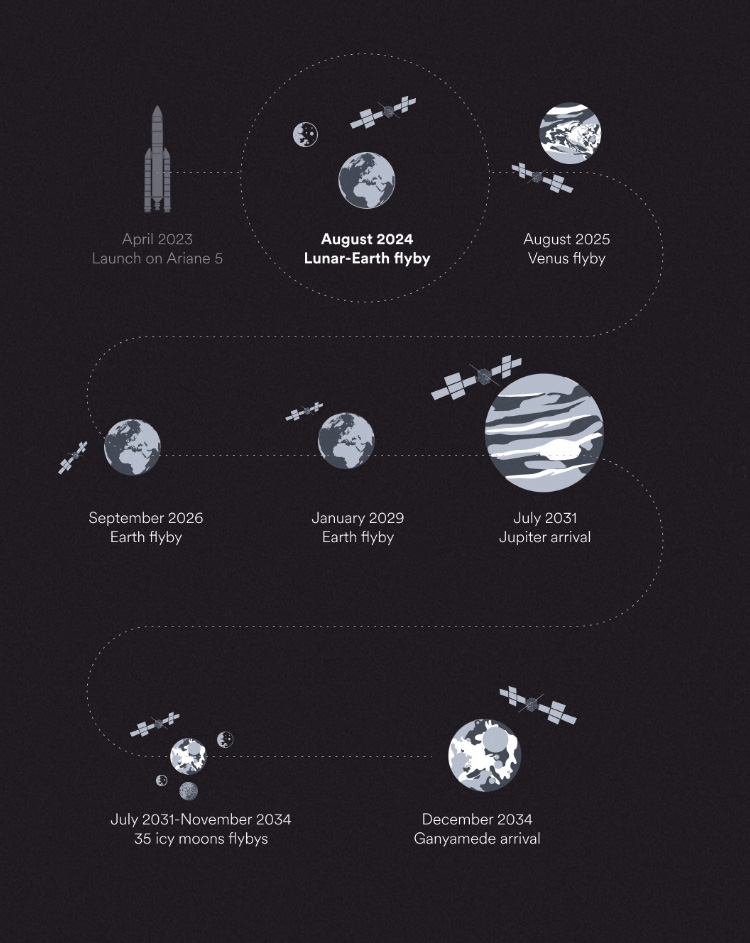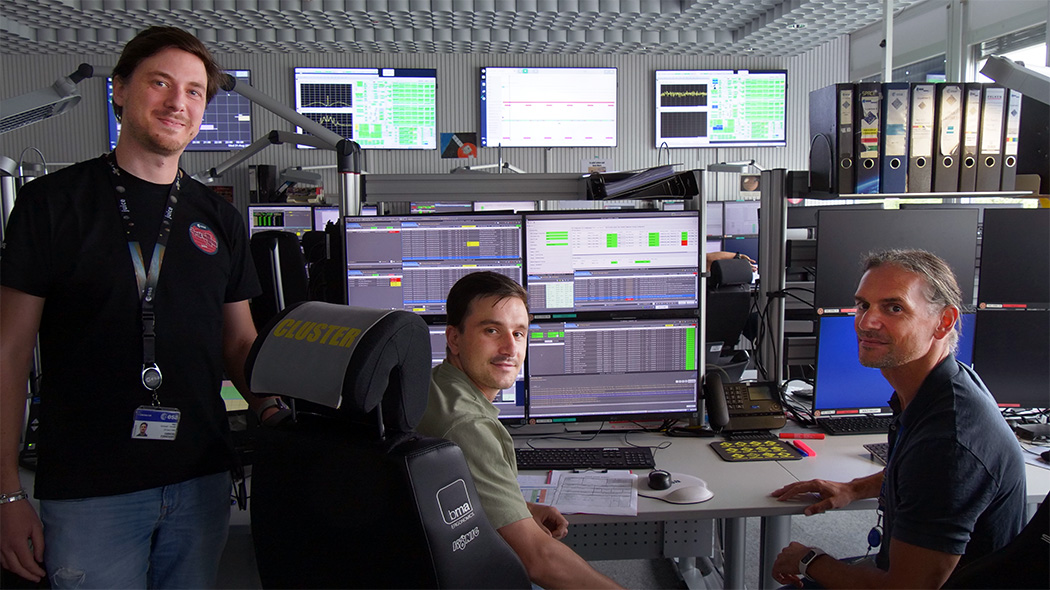That’s something that our team at SSC Company LSE Space had to master as they navigated what had never been done before: a double gravity assist!
On 19-20 August 2024, the JUICE (JUpiter ICy Moons Explorer) space probe successfully performed a flyby of the Moon followed by a flyby of Earth the next day, as part of its journey to Jupiter.
A double gravity assist involves using the gravitational pull of not only one, but two celestial bodies in sequence to change a spacecraft’s speed and trajectory. By carefully timing flybys of these bodies, the spacecraft gains energy from one and adjusts its path toward the next, enabling it to reach distant destinations more efficiently. Sending Juice straight to Jupiter would have required 60 000kg of onboard propellant, which would have been quite complicated to arrange.
When talking about the mission, our Spacecraft Operations Engineer Team Lead Ry Evill explains:
“It has been both exciting and at times nerve-wracking preparing for and executing the Juice LEGA (Lunar-Earth Gravity Assist).
The complications of the double gravity assist maneuver arise out of the greatly reduced margins for error. If we miss the optimal Moon flyby, we potentially enter the Earth flyby with the incorrect approach trajectory, which could be catastrophic. All activities taking place in the 24 hours between the Moon and Earth flyby are greatly condensed compared to the timeframe over which they are usually performed; we have much less time than usual to recompute orbit determination following the Moon flyby, and only have a few hours to implement a trajectory correction maneuver in case we need it prior to the Earth flyby.
The Moon flyby not only provides an additional gravity kick for spacecraft navigation, but also offers a unique opportunity to calibrate the science instruments on board. In fact, the flyby is similar to the type of operation that Juice will perform at the moons of Jupiter in 7 years’ time, where it will perform 35 moon flybys as it orbits Jupiter. The Jupiter tour promises to be a spectacular culmination to the Juice journey!”
If you haven’t heard of the mission before, “Juice” stands for Jupiter Icy Moons Explorer and is a mission by ESA. It will spend four years making observations on Jupiter and three of its largest moons, and whether the moons host liquid water underneath their icy surfaces or not. Since it’s been proven that life can thrive in the darkest and deepest parts of the oceans on our own planet, chances are that there might be life in their hypothetical oceans too.
Top image: Part of the LSE team in the ESOC interplanetary control room, monitoring JUICE after the Moon flyby and as it was approaching the Earth flyby.

JUICE flybys to reach Jupiter.

